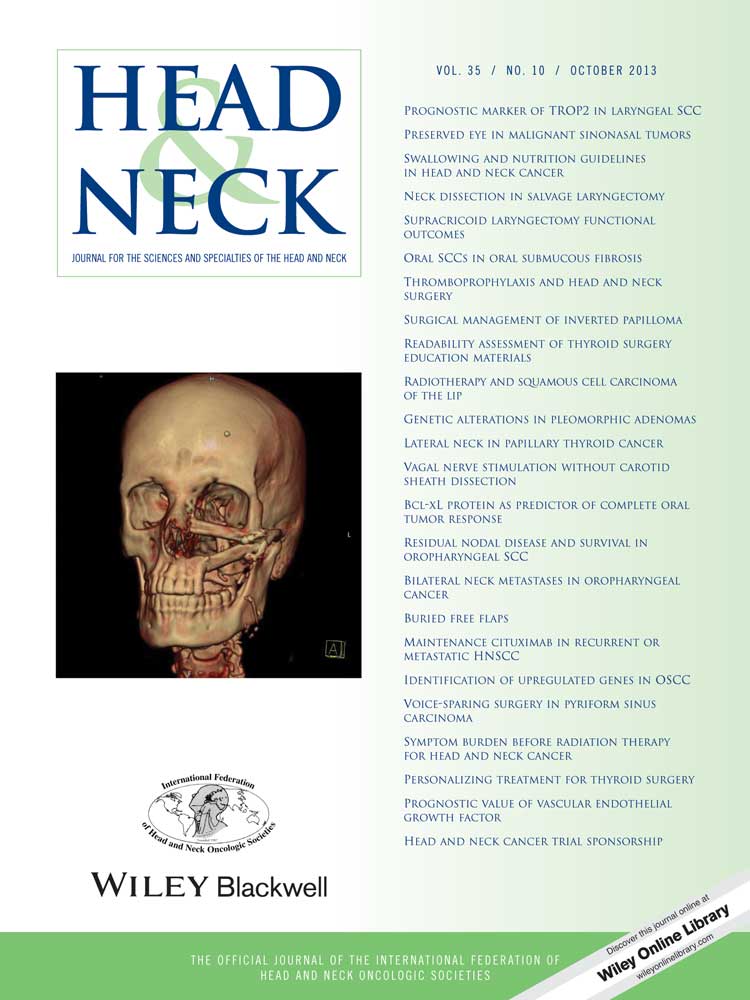Residual nodal disease in patients with advanced-stage oropharyngeal squamous cell carcinoma treated with definitive radiation therapy and posttreatment neck dissection: Association with locoregional recurrence, distant metastasis, and decreased survival
Abstract
Background
Oropharyngeal squamous cell carcinoma (OPSCC) is increasing in frequency. We reviewed patients with advanced-stage OPSCC treated with chemoradiation to assess the impact of residual neck disease on survival.
Methods
We reviewed 202 patients with OPSCC between 1990 and 2010 treated with primary chemoradiation followed by neck dissection. Imaging was analyzed using RECIST (Response Evaluation Criteria In Solid Tumors) 1.1 criteria. Survival was evaluated using both univariate and multivariate analyses.
Results
Overall survival at 5 years was 89%. Forty-two patients (21%) had residual disease in the neck (pN+). pN+ was associated with greater locoregional recurrence (LRR) and distant metastasis (DM) and decreased survival. No clinicopathologic factors were predictive of pN+. Contrasted posttreatment CT had low sensitivity and specificity.
Conclusions
In advanced OPSCC pN+, patients have higher rates of LRR and DM. Neither clinicopathologic factors nor posttreatment imaging was predictive of pN+, although increased use of modern imaging may reduce the rate of negative neck dissections. © 2012 Wiley Periodicals, Inc. Head Neck 35: 1454–1460, 2013




